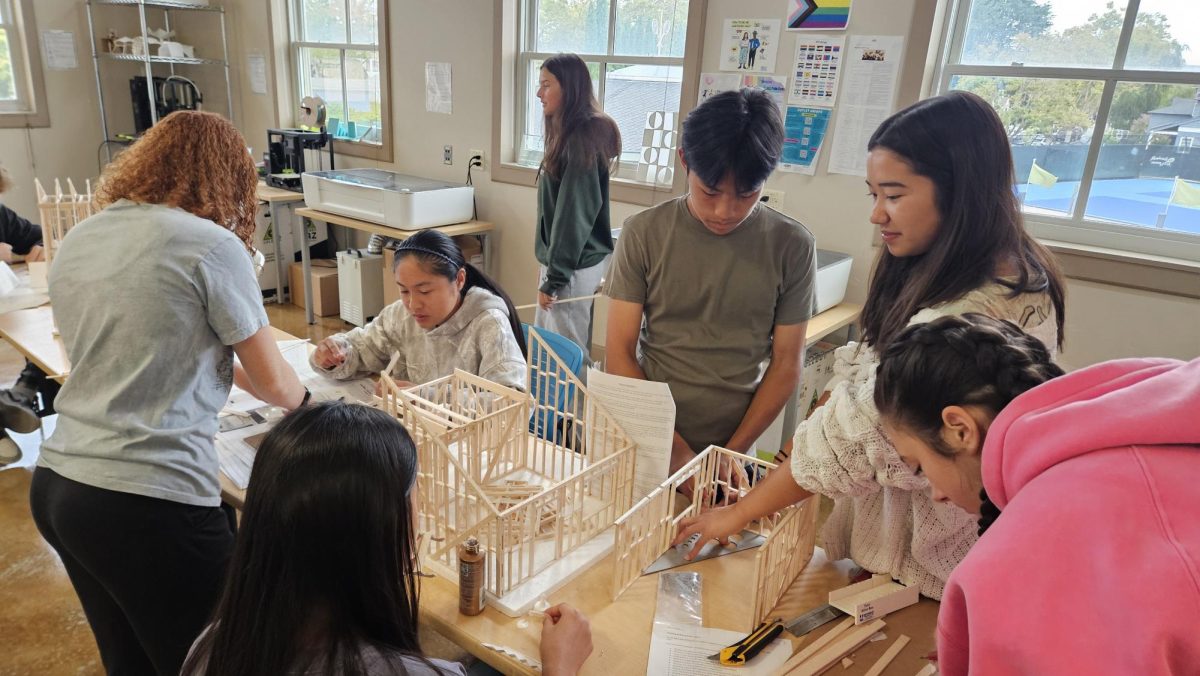Last summer, when junior Kyle Tran told junior Julien Mott about his idea for a new club specifically dedicated to combat robotics, Mott’s response was rather skeptical. As an experienced robot designer himself, he entertained the idea, and the two started the club in the fall and now have nine dedicated members.
“I had just recently gotten into combat robotics from [Mott], who had done it for three or four years before me,” Tran said. “I got them together and started applying to create a club at school.”
Through Tran and Mott’s leadership, the club members use CAD modeling platforms to design and build “ant-weights” which are one-pound robots that they use to fight against other team’s robots in competitions. The club has actually benefited from its smaller size as Tran and Mott have been able to work individually with members.
“Since there weren’t too many members, we were able to teach them all one-on-one,” Tran said. “It went a lot faster because of that.”
They also want to help members develop their engineering skills in general, in order to prepare them for engineering professions in the future.
“We’re just giving everyone a lot of attention, making sure they have good design intuition, knowing how to do CAD designs, everything you need to build a successful combat robot,” Mott said. “Also, just the necessary skills for engineering professions and vocations.”
So far, the club has competed at three different events. Most of their competitors consist of collegiate teams from universities, and given the age difference, the team placed quite well. In one of the competitions, the NorCal robotics expo, the team placed first in the “ant-weights” category and second in the “plastic ant-weights” category.
“We did a pretty big clean sweep at [the NorCal expo] very early into our club,” Mott said. “This kind of set our roots and made us more well-known.”
The process of building a combat robot is no easy task, and Mott and Tran have created a design-heavy planning phase before building the robots.
“We make it so that 90% of your time is drawing and designing,” Mott said. “So when you’re actually building these things, it goes together seamlessly and cost-effectively.”
While this method has proven effective, the club has still experienced some setbacks in their design process.
“Our newer members didn’t have much time to build the robot, and didn’t have time to see certain flaws and things that didn’t work yet,” Tran said.
In the future, Mott and Tran plan to attract more members to their club, and are trying to acquire more funds for their club in order to build their own robot fighting arena.
‘We’re trying to secure funding from a California-based organization, and hopefully we can get enough funding to build an arena to host exhibitions,” Mott said. “We can hopefully host some competitions at our school.”








































Marguerite Lee • May 31, 2024 at 11:56 am
How unfortunate to have young people working on combat robotics when there are so many other type of robotics that would improve everybody’s standard of living. Please cease making combat robots.
Julien Mott • Aug 22, 2024 at 1:47 pm
Hi Marguerite, I hope you’re as open minded as you are vocal. Robot combat is a wonderful competition that has been at the center of high school and college engineering communities for the past twenty years. I don’t blame you for your initial reaction; with the modern utilization of robotics for warfare (I.E. drone strikes, A.I.), it’s logical you might deem this to be adjacent. However, I’d like to politely dissuade you in this notion. I have been competing in combat robotic competitions since elementary school. This interest of mine would never have been sparked without the “combat” element to the competition. The 1-on-1 aspect was very exciting for me as a young person. As I’ve grown as a person and a competitor my interest has subtly shifted and I believe I can put it in words that will make sense to someone like you. Robot combat is the only robotics competition that necessitates design optimization. If your robot isn’t optimized for a competition it will be destroyed. With the intel builders gain from these failures they rebuild, this time a new version that will fare better in a fight. Because of this, competitors are pushed to work harder and smarter than they would if cutting corners was a valid path of action. Additionally, robot combat isn’t fundamentally about destruction. Sure, the chaos draws an audience, but there’s so much that goes into each robot that 99-percent of a competitor’s efforts is spent in CAD, building, and testing. Finally, these projects are independent. Competitors are able to build exactly what they want without someone restricting their creativity. Hopefully this was informative. I would be really happy if this made you more open minded. Robot combat is a rapidly growing competition with clubs and leagues at almost every major engineering school in America. This is because it’s sophisticated, creative, and exciting.
Thanks,
-Julien Mott
Rohan Person • Aug 22, 2024 at 2:13 pm
Combat Robotics functions as the most extreme testing environment for many branches of engineering. Advancements in brushless motors, sensor technology, tool steel applications, and many other fundamental design techniques were direct results from innovation in Combat Robotics. Not to mention, these events help inspire the future generation of engineers way more than any trade expo. Source: I hosted the event that the splash photo was taken at.